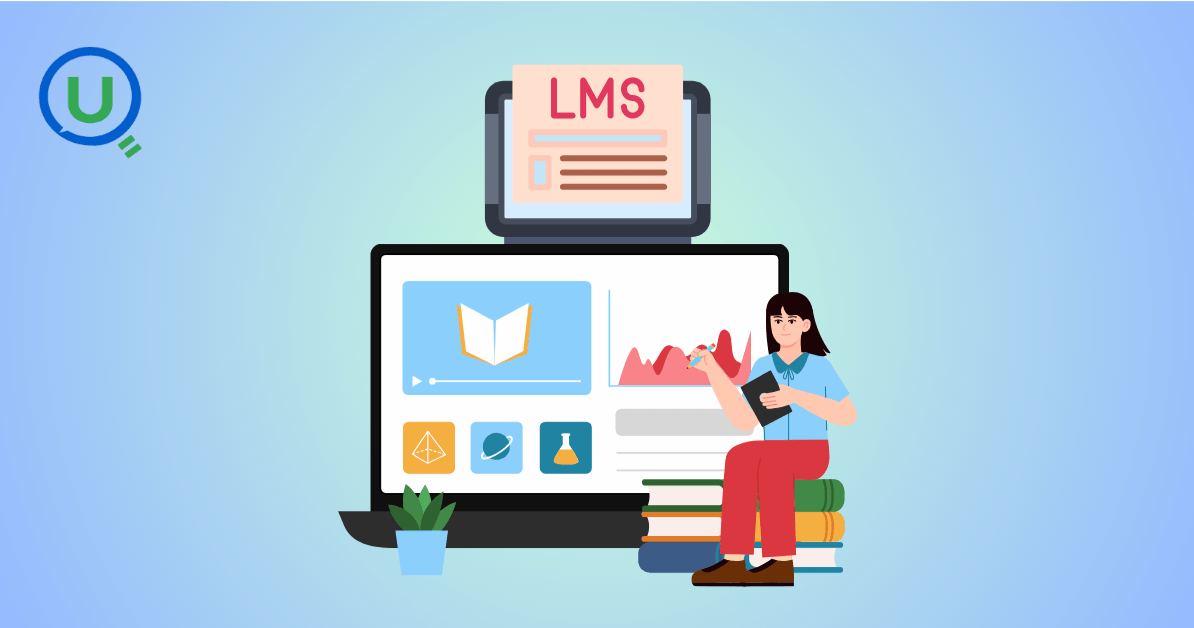Enhancing Readability for Effective Learning and Development

Ready to transform your data strategy with cutting-edge solutions?
Introduction
As we venture into the ever-evolving landscape of learning and development, it is crucial to address the fundamental aspect of readability. A well-crafted piece of content has the power to engage and educate learners, enabling them to absorb information more effectively. Drawing inspiration from Deepak Singh's book, "Tech Simplified," we explore the significance of readability in the context of learning and development, understanding its impact on learners' comprehension and engagement.
Understanding Readability
In education, readability means how easy or difficult it is for the intended readers to understand a piece of text. It's about how clear and simple the text is for them to read and comprehend. While the concept itself might seem straightforward, achieving optimal readability requires thoughtful consideration of various factors. This includes sentence structure, word choice, use of technical jargon, paragraph length, and overall layout.
The importance of Readability in Learning and Development
1. Facilitating Comprehension: Readability is directly linked to comprehension. By presenting content in a clear and concise manner, we ensure that learners can easily grasp and assimilate information. Complex sentence structures, convoluted phrases, and ambiguous language can all hinder learners' ability to understand and retain the content.
2. Enhancing Engagement: Engaging learners is essential for fostering an effective learning experience. Readability plays a significant role in this aspect, as learners are more likely to stay invested in the content if it is presented in a readable and interesting manner.
3. Improving Retention: Readability aids in better retention of information. When learners can easily follow the content, it becomes more memorable and accessible in the future.
4. Inclusive Learning: A focus on readability ensures inclusivity in the learning process. It accommodates learners with diverse backgrounds, language proficiency, and cognitive abilities.
Factors Influencing Readability
1. Sentence Structure: Short and straightforward sentences are easier to comprehend than long and convoluted ones. It's essential to break down complex ideas into digestible chunks, aiding learners in processing information efficiently.
2. Word Choice: The choice of words impacts readability significantly. Avoiding technical jargon or explaining it when necessary can make a substantial difference in learners' understanding.
3. Active Voice vs. Passive Voice: The active voice is generally more straightforward and engaging, as it conveys actions directly, making the subject and action clear.
4. Paragraph Length and Formatting : Long paragraphs can be overwhelming and challenging to follow. Breaking content into smaller paragraphs and using formatting elements such as bullet points and headings can improve readability.
5. Visual Elements: Incorporating visual elements like images, graphs, and diagrams can enhance comprehension by providing visual cues that complement the text.
6. Consistent Tone and Style: Maintaining a consistent tone and style throughout the content ensures a cohesive and coherent learning experience.
Readability Assessment Tools
In today's digital age, several readability assessment tools can help learning and development professionals gauge the readability of their content. These tools evaluate various readability metrics, such as the Flesch-Kincaid Readability Index, Gunning Fog Index, and the Simple Measure of Gobbledygook (SMOG) formula. By inputting the text into these tools, professionals can identify areas that need improvement and make the necessary adjustments.
Tips for Improving Readability
1. Know Your Audience : Understanding your target audience is crucial for tailoring content to their specific needs and preferences. Consider their educational background, language proficiency, and familiarity with the subject matter.
2. Edit and Revise : Writing with optimal readability often requires multiple revisions. Edit your content to ensure clarity, simplicity, and coherence.
3. Use Plain Language : Avoid using unnecessary jargon and technical terms, or if unavoidable, provide clear explanations.
4. Engage with Visuals : Include relevant images, infographics, and videos to support the text and make the learning experience more engaging.
5. Seek Feedback : Before publishing your content, seek feedback from a diverse group of individuals to ensure it is understandable and accessible to a broader audience.
Before I conclude, I’d like to showcase how we have applied the tips to improve readability into the real world instruction design of our content, which we design and deliver for upskilling corporate learners.
I’ll provide examples under the following headings:
Sentence Structure : We’ve designed our instructions as short, concise statements. The decision to go with conversational style of writing was due to the fact that sentence lengths in conversations tend to be small

Word Choice : We have tried to use simple, everyday words in our stories so that the learner spends more time learning than figuring out the meanings of words. Also, we’ve followed the strategy of delaying the introduction of tech jargon until the end of a given module. The start of every module is a scenario that the learners go through and finally discover the technology needed to solve.

Active Voice vs. Passive Voice : The choice of active voice was straightforward for us. We wanted to build conversations so that the learner felt like an active participant rather than a passive listener
Paragraph Length and Formatting : Following the best practises of readability, we kept a thumb rule to not extend any conversation beyond a single page. Also, we tried to keep paragraph length smaller
Visual Elements : Wherever necessary, we’ve tried to include visual clues for the learners to associate the concepts with some image that can be remembered forever. This has significantly improved readability for the learner.

Conclusion
As learning and development professionals, we have the privilege and responsibility to shape the way information is presented to learners. By prioritising readability, we empower learners to thrive in their educational journeys. Drawing inspiration from Deepak Singh's "Tech Simplified," we recognise the importance of clear communication in facilitating learning. In our pursuit of creating enriching educational experiences, let us embrace readability as a guiding principle, ensuring that our content is accessible, engaging, and transformative for all learners.
Ready to Experience the Future of Data?
You Might Also Like

A complete guide to building a future-ready L&D team in 2025. Explore the roles, skills, structure, and AI-driven strategies that drive real business impact.

Learn how to bridge the digital skills gap with effective upskilling strategies. Discover how to foster a culture of continuous learning, personalize training with AI, and focus on future-ready skills.

Discover 5 key strategies to overcome upskilling and reskilling challenges in the age of AI. Learn how to build a future-ready workforce with personalized learning, cross-functional collaboration, and real-world application.

Explore the key differences between LXP and LMS platforms and learn which is best for your business in 2025. Discover how AI-driven learning systems can boost employee engagement and upskill your workforce for the future.

Discover 6 powerful ways to upskill employees and future-proof your workforce in the age of AI and data. Learn how leading organizations are adapting learning strategies to stay ahead.

Explore the difference between reskilling and upskilling and why it matters for career growth and organizational success. Learn how reskilling helps workers pivot to new roles and how upskilling enhances current skills to stay competitive in today's fast-changing job market.

Explore the 6 core adult learning principles and how they can transform your training programs. Learn how to apply these principles for better engagement, retention, and real-world application, ensuring meaningful learning experiences for adult learners.

Discover the 9 key components of an effective learning experience and how they drive better engagement, retention, and real-world application. Learn how organizations can implement these elements to create impactful learning journeys.

Boost your Business Intelligence skills in 2025 with 25 hands-on exercises that cover data analysis, visualization, SQL, and more. Perfect for professionals looking to sharpen their BI expertise and stay ahead in the competitive job market.

Learn about Learning Management Systems (LMS), their key benefits, and popular examples like Moodle, Google Classroom, and Enqurious. Discover how LMS platforms are revolutionizing education and training for businesses and schools.

Discover how AI is transforming workplace learning and development by personalizing training, delivering real-time feedback, and aligning learning with business goals to drive workforce excellence and growth.

Discover why a Capstone Project is essential in 2025. Explore how it bridges the gap between theory and practice, enhances problem-solving skills, provides industry experience, and prepares students for real-world challenges. Learn how capstone projects are shaping future careers.

In today’s rapidly evolving job market, the value of evidence-based skills has never been more critical. As industries shift and technology transforms how we work, the need for tangible proof of competencies has become paramount.

In today’s rapidly evolving technological landscape, one skill stands out above all others: learnability. Learnability, often described as the ability to continuously acquire new skills and adapt to change, is no longer just an advantage but a necessity.

To build a future-ready workforce, companies need to rethink talent strategies. Start by developing a data-driven talent system to align key roles with best-fit talent. Invest in AI training now to stay ahead, and shift hiring practices to focus on skills, not just job titles.

At Enqurious, we understand the importance of empowering workforces with the right skills to navigate emerging challenges. Enqurious works as a strategic partner to supplement and enhance L&D Teams.

Understanding how variables work together can supercharge your marketing strategy.

Marketing Effectiveness: Strategies, Channels, and ROI Maximization

The transformative journey of the energy sector: from outdated practices to a data-driven revolution.

This guide helps to understand what elements come together to make or break a visual

Thoughtfully crafted instruction design with drops of ambiguity and room for creative thinking makes the learning experience more enjoyable and “real world”.

Even after putting the best of the content, infrastructure and people, the gap between the intention of organizations to foster a culture of learning and the actual implementation and adoption of learning initiatives by employees keeps on widening.

Understanding why it is so important to nurture self driven learners in a fast paced technology world

Leveraging data to design better and efficient L&D strategy for organization success
